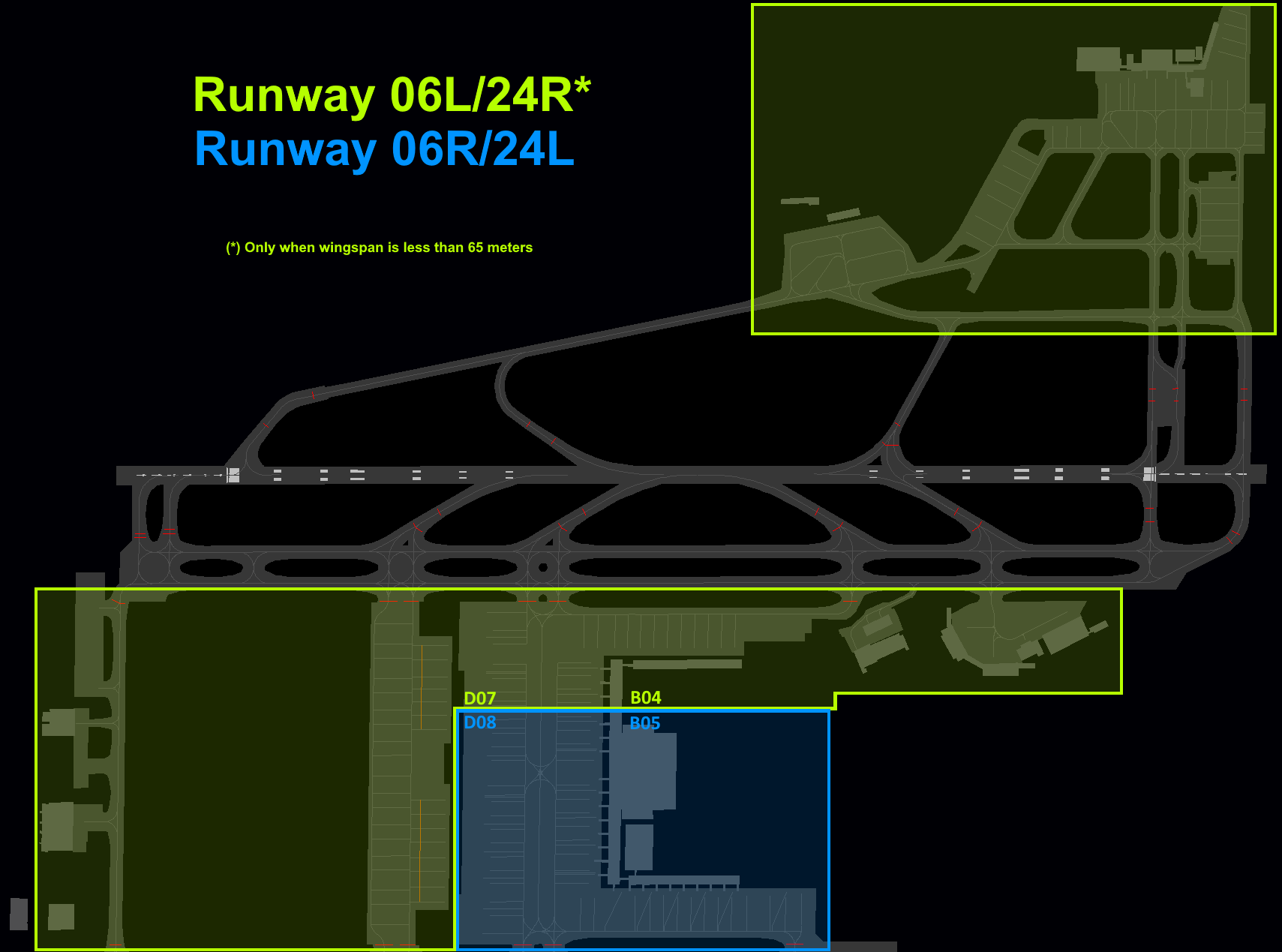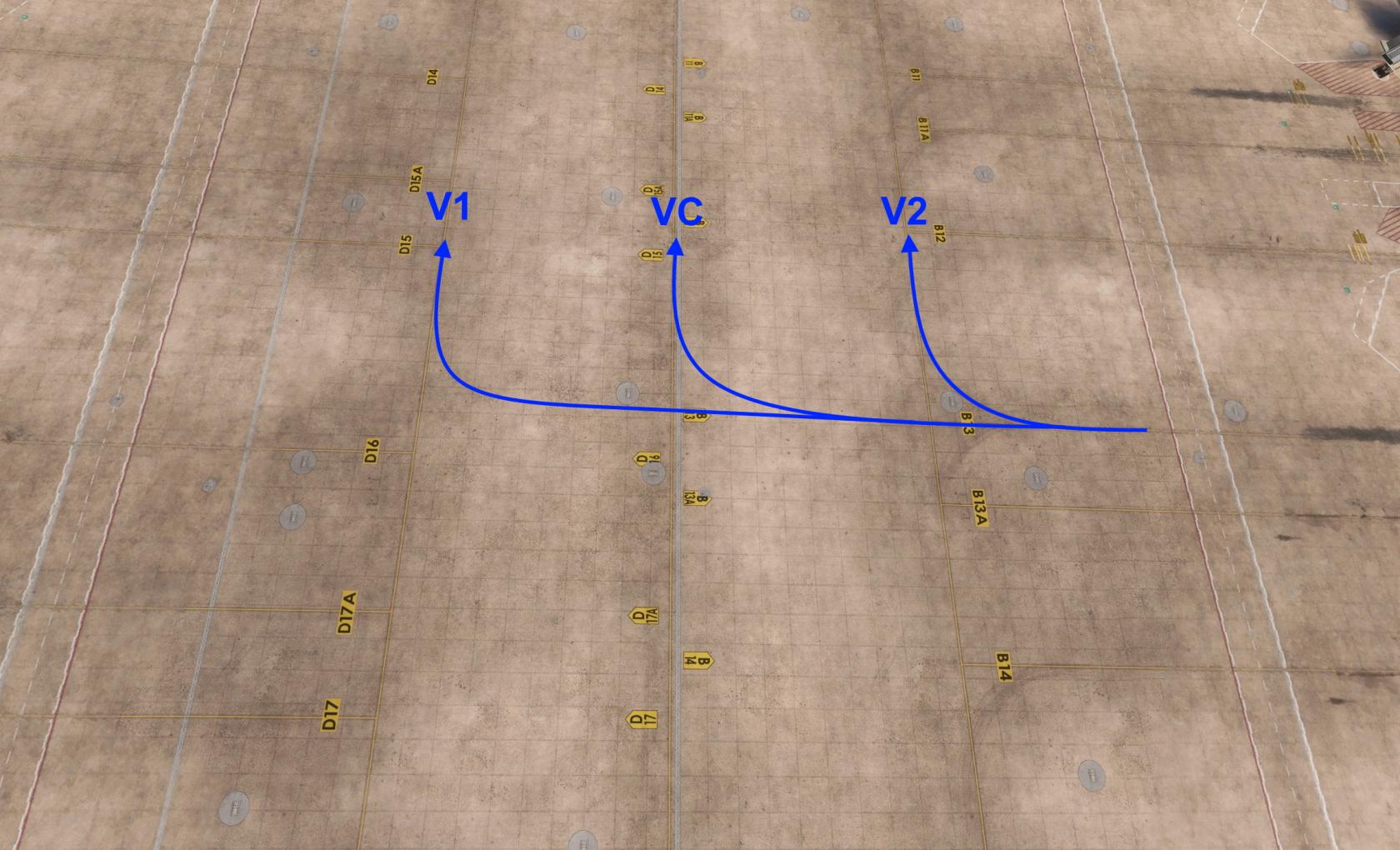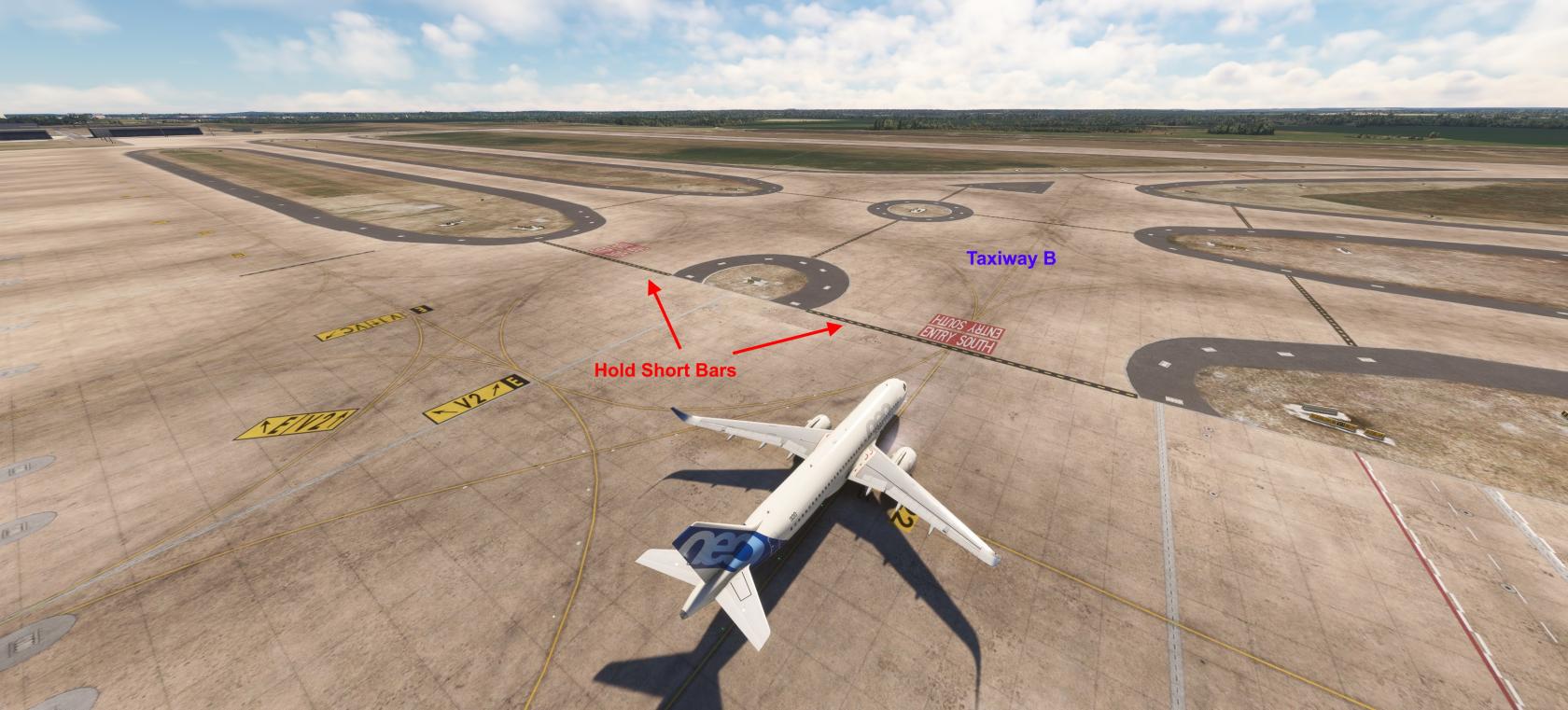Departing Traffic
Due to the recent change of runway direction (from 07/25 to 06/24) please ensure that your scenery and nav data are up-to-date. Aerosoft users need to update the scenery via the Aerosoft One software!
IFR Clearance
Departure Runway
The departure runway is assigned depending on the parking positions. Aircraft with a wingspan of 65 m and more will always get runway 06R/24L assigned. Keep in mind, that Delivery usually will not include your departure runway in the IFR clearance. Your assigned SID is only valid for one specific departure runway.
Datalink Clearance (DCL)
Berlin-Brandenburg also offers electronic datalink clearances (DCL). Usually, the station code is EDDB. If your aircraft does not have a direct integration of the Hoppie system, you can also use the standalone easyCPDLC client.
Requesting clearance electronically is preferred over voice clearances as it reduces frequency congestion thus avoiding delays. Because of this, we ask all pilots able to use the Hoppie ACARS system to do so.
SIDs from Runway 06R (Q-SID)
In most cases, traffic departing from runway 06R will get assigned a SID with a Q designator. Please brief this departure route in detail, as it will generate quite some workload for the pilot:
This Q departure routes require a strong right turn as soon as you cross 600 feet. Please do not turn earlier or later.
Your FMS might not be able to display this procedure correctly. Therefore we recommend flying the initial right turn manually.
Mit freundlicher Genehmigung der DFS Deutsche Flugsicherung GmbH. Nicht für navigatorische Zwecke geeignet.
Startup Approval
A startup approval is the controller's assurance that you will be cleared to start moving within the next few minutes.
Do not start your engines at the gate, unless you have a taxi-out position. Even with startup approval, the engines are started during pushback.
Pushback will not be issued by Delivery. Startup approval is not a clearance for pushback! Hold position and request pushback separately on the Apron frequency, once you have been handed over to this frequency.
Apron Procedures
At Berlin, all manoeuvres on the apron movement areas are subject to ATC clearance by Berlin Apron (except Apron 1, 4 and W1-W5).
Pushback Procedures
Berlin Apron will instruct the type of pushback which shall be used. This can be either a pushback with a turn to a certain direction or a pushback straight back.
For traffic parking in Apron B or D, Berlin Apron often instructs traffic to push back onto taxi lines V1, V2 or VC. Please make sure that your pushback tool can perform the pushback onto the correct taxi line. If not or you are unsure if you can pushback correctly, please contact Berlin Apron immediately and explain the situation.
Taxi Procedures
Swing-Over
ATC will often issue "Swing-Over-Instructions" meaning that aircraft are supposed to directly switch taxiways from the present positions. This procedure will be applied between taxiways V1, V2 and VC.
Please don't follow any guidance lines to swing over between taxiways V1, V2 and VC. Instead, switch directly when instructed by Berlin Apron.
Note: This procedure will not be applied when Low Visibility Conditions exist.
Virtual Barrier
Due to an airport street crossing the apron, only VC can be used as a connection between taxiways V1-V3 and V2-V4. There is no direct connection between those taxiways!
ATC often issues so-called "swing over instructions" to clear aircraft onto VC. Please switch from taxiway V1 or V2 to VC immediately when instructed. There is no guidance line to switch between V1, V2 and VC. Aircraft shall self-manoeuvre on the apron.
Hold Shorts
Berlin Apron will usually instruct to hold short of taxiway B or taxiway C when leaving the Apron. Alternatively, the phrase "Hold Short of Entry North/South" may also be used, marking the end of the Apron.
Holding short of a taxiway/entry means stopping in front of this taxiway/entry. Never join taxiway B or C without the explicit instruction from Berlin Ground/Tower ("taxi via B/C").
High Intensity Runway Operations (HIRO)
Pilots shall ensure that they carry out these instructions without delay after receiving clearance up to the point of departure or take-off clearance in order to keep the RWY occupancy times to an absolute minimum. Cockpit checks should be concluded prior to taxiing onto the RWYs. Checks which still have to be carried out on the RWY shall be kept to a minimum.
Directions from aerodrome control to be ready for immediate take-off ("be ready for/expect immediate departure") will be issued if immediate compliance with the ensuing take-off clearance is ensured with as little RWY occupancy time as possible. Pilots unable to comply with this shall inform aerodrome control without delay.
Intersection Departures
Pilots shall be prepared for the following take-off runs available (TORA). If they require longer take-off runs or accept shorter ones, they shall communicate this when in contact with Berlin Ground.
| TYPE CLASS | RWY 24R | TORA | RWY 24L | TORA | RWY 06R | TORA | RWY 06L | TORA |
| HEAVY | L8 | 3600 m | M8 | 4000 m | M2 | 4000 m | L1 | 3600 m |
| MEDIUM JET | L7 | 3300 m | M7 | 2715 m | M3 | 2475 m | L2 | 3500 m |
| LIGHT JET, TURBOPROP | L6 | 2515 m | M6 | 2265 m | M3 | 2475 m | L3 | 2470 m |
| TYPE CLASS | RWY 24R | TORA | RWY 06L | TORA |
| HEAVY, MEDIUM JET | K6 | 3600 m | K1 | 3300 m |
| LIGHT JET, TURBOPROP | K5 | 3385 m | K2 | 2150 m |
Independent Parallel Departures
Simultaneous parallel departures in progress. Proceed exactly on the extended centerline until starting turns as published and remain on TWR frequency until further advised.
Any Deviation from the departure route will cause a conflict immediately. If required, Berlin Tower will issue heading instructions to establish separation again.






